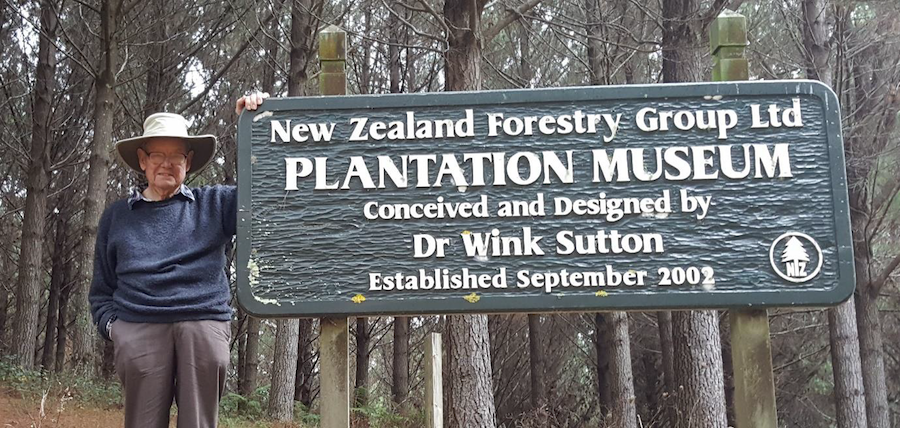We need intensively managed plantations
From New Zealand Tree grower May 2016

Wood is the world’s only environmentally friendly and sustainable raw material. There are current global proposals for a significant increase in wood use such as in the manufacture of biofuels and plastics to replace the use of fossil fuels. The most exciting proposals are for wood to reduce the need for steel and concrete in the construction of high rise buildings. Wooden buildings of 10, 20 and even 30 stories have been proposed or even started.
When there were few humans on earth we were hunter-gatherers obtaining our food and wood from the natural forest.The human population is now so large that we have no option but to get almost all our food from intensive agriculture. In contrast, we still get most of our wood from natural tree species in indigenous forests of which some are managed. Because plantations of some exotic tree species can be much more productive than natural forests even if managed, then globally more of our wood must be supplied from plantations.
Greenpeace provides an insight into how an environmental organisation regards plantations. Greenpeace’s Forest Campaign Manager, Grant Rosoman, in a paper to the United Nations Forum on Forests Expert’s Meeting on Planted Forests in March 2003, provides an interesting insight into the Greenpeace attitude to plantations and understanding them.
Rosoman restated the Greenpeace position on plantations − ‘Greenpeace doesn’t like plantations. We have learnt to live with them for strategic advantage. We disagree with calling them planted forests because they are not forests ... it is not enough justification for plantations to be considered good if they are simply substituting, on a global basis, supplies from poorly managed or increasingly depleted natural forests.’
Later in the paper Rosoman’s criticisms of plantations include the use of pesticides, timber preservation treatment and monocultures. Plantations are criticised for their lack of species diversity advocating a preference for native species and a range of different species. Greenpeace is opposed to carbon credits for plantations.
Rosoman appears to be unaware of New Zealand’s plantation history, especially why the country moved to obtain most of its wood from plantations. In a disservice to earlier forestry visionaries, Rosoman states ‘The reliance of plantations as a source of the wood and fibre was not a matter of good planning or management but rather a strategy to deal with the failure of the State and New Zealanders to [manage] their native forests in any way for the future wood supply.’
Is Greenpeace implying that most of our wood should come from managed indigenous forest? If so, Greenpeace is in total disagreement with most other New Zealand environmental organisations.The initial advocacy for plantations came from the realisation that New Zealand’s indigenous forest was rapidly being converted to agriculture. The early foresters considered the option of indigenous forest management, but mainly because the forests were slow growing, it was obvious that sustainably managed indigenous forests could not supply most of the wood New Zealanders require.
In addition, managed indigenous forests required management for at least 100 years before there could be any significant wood harvest. The perception around 1900 was that forest clearance was so rapid that exploitable indigenous forest would be exhausted by 1945 to 1950. It is unrealistic to imply that most of our wood could come from responsibly managed indigenous forests. If New Zealand’s four million people only used one cubic metre of wood per person each year, about half our present level of consumption, assuming there were no wood exports and the indigenous forest growth averaged one cubic metre a hectare each year, we would require four million hectares of native forests to be managed for wood production.
Not only is this unthinkable but the wood harvested would be prohibitively expensive for general use. Indigenous timber may be acceptable for furniture or feature panels, but I cannot see the environmental movement ever accepting indigenous timber being used for house construction, building boardwalks, outdoor stairs, fences, chicken coups or for pulping.
Given Greenpeace’s advocacy of responsible indigenous forest management why did they not publicly oppose the Labour government’s politically motivated scrapping of the West Coast Accord which resulted in the demise of West Coast Timberlands? Such action may have brought them in conflict with some other environmental groups but it would be consistent with their basic philosophy.
Although this article challenges Greenpeace, my comments are applicable to most environmental organisations. At least Greenpeace had the courage to present an anti-plantation paper to a meeting that generally regarded plantations as necessary and beneficial. The world has no option but to get more of its future wood needs from intensively managed plantations.
Disclaimer: Personal views expressed in this blog are those of the writers and do not necessarily represent those of the NZ Farm Forestry Association.

No posts yet
Add a post